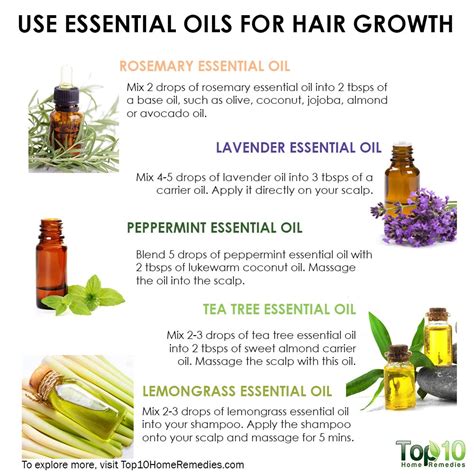Base Oil for Essential Oils: Your Guide to Mixing, Safety, and Effectiveness
Essential oils, the fragrant liquids extracted from plants, have been used for centuries in aromatherapy, traditional medicine, and cosmetics. Today, these oils are gaining renewed popularity for their diverse therapeutic and rejuvenating properties.

To safely and effectively use essential oils, it’s crucial to dilute them with a base oil. Base oils are carrier substances that help disperse the concentrated oils, preventing skin irritation and ensuring optimal absorption.
Selecting the ideal base oil depends on your skin type, desired concentration, and application method. Here are the key factors to consider:
- Viscosity: Oils with varying viscosities can affect absorption rates. Lighter oils (e.g., jojoba) absorb quickly, while heavier oils (e.g., coconut) provide sustained hydration.
- Comedogenicity: Some oils can clog pores and lead to breakouts. Non-comedogenic oils (e.g., grapeseed, almond) are suitable for all skin types.
- Aroma: Choose a base oil with a neutral or complementary scent to enhance or balance the aroma of your essential oils.
- Shelf life: The oxidative stability of base oils varies. Oils with a longer shelf life (e.g., avocado, castor) are less prone to rancidity.
1. Jojoba Oil
- Viscous: Light
- Comedogenic: Non-comedogenic
- Aroma: Neutral
- Benefits: Rich in antioxidants, non-greasy, penetrates skin deeply
2. Coconut Oil
- Viscous: Medium
- Comedogenic: Moderate
- Aroma: Mild coconut scent
- Benefits: Moisturizing, antimicrobial, anti-inflammatory
3. Sweet Almond Oil
- Viscous: Light
- Comedogenic: Non-comedogenic
- Aroma: Nutty, sweet
- Benefits: Calming, soothing, high in vitamin E
4. Grapeseed Oil
- Viscous: Light
- Comedogenic: Non-comedogenic
- Aroma: Neutral
- Benefits: Antioxidant-rich, non-irritating, absorbs well
Determining the Right Dilution Ratio
The concentration of your essential oil blend depends on the intended use. Here’s a general guide:
| Dilution Ratio | Use |
|---|---|
| 1-2% | Facial care, massage |
| 3-5% | Body care, aromatherapy |
| 10-30% | Topical pain relief, insect repellent |
Mixing Techniques
- Simple mixing: Add a few drops of essential oil to a spoonful of base oil and stir gently.
- Emulsification: Use a small amount of emulsifier (e.g., polysorbate 80) to help blend water-based essential oils with oil-based base oils.
- Never apply undiluted essential oils directly to the skin.
- Perform a patch test before using a new blend on a large area of skin.
- Store diluted blends in a cool, dark place to prolong their lifespan.
- Keep essential oils out of reach of children and pets.
While aromatherapy remains a primary use of base oils, these versatile substances are finding innovative applications in various fields:
- Cosmetics: Base oils serve as moisturizers, cleansers, and carriers for active ingredients in skincare and haircare products.
- Pharmaceuticals: Oils like MCT (medium-chain triglycerides) and olive oil are used as delivery systems for medications.
- Massage therapy: Base oils enhance the therapeutic effects of massage by promoting relaxation and reducing muscle soreness.
- Insect repellent: DEET-free blends of essential oils and base oils provide natural protection against insects.
Unlock the full potential of essential oils by choosing the right base oil for your needs. By following these guidelines, you can safely and effectively enjoy the transformative benefits of aromatherapy.
| Application | Dilution Ratio |
|---|---|
| Facial care | 1-2% |
| Massage | 1-5% |
| Body care | 3-5% |
| Topical pain relief | 10-20% |
| Insect repellent | 20-30% |
| Base Oil | Viscosity | Comedogenicity | Aroma |
|---|---|---|---|
| Jojoba oil | Light | Non-comedogenic | Neutral |
| Coconut oil | Medium | Moderate | Mild coconut scent |
| Sweet almond oil | Light | Non-comedogenic | Nutty, sweet |
| Grapeseed oil | Light | Non-comedogenic | Neutral |
| Avocado oil | Medium | Moderate | Mild, earthy |
- Choose the right dilution ratio: Consider the intended use and skin sensitivity.
- Use high-quality base oils: Opt for cold-pressed, unrefined oils for optimal potency and freshness.
- Mix thoroughly: Use gentle stirring or emulsification techniques to ensure even distribution of essential oils.
- Experiment with different oils: Explore various base oils to discover the ones that best complement your essential oils.
Q: Can I use water as a base oil for essential oils?
A: No, water does not mix well with essential oils. Use an oil-based carrier for proper dilution.
Q: How long do diluted essential oil blends last?
A: Shelf life depends on the base oil used. Store blends in a cool, dark place for optimal longevity (typically 6-12 months).
Q: Can I use essential oils directly on my skin without a base oil?
A: Never apply undiluted essential oils directly to the skin. This can cause irritation or burns.
Q: What are the best base oils for sensitive skin?
A: Choose non-comedogenic oils like jojoba, sweet almond, or grapeseed oil. Avoid coconut oil, which can be more irritating to sensitive skin.
